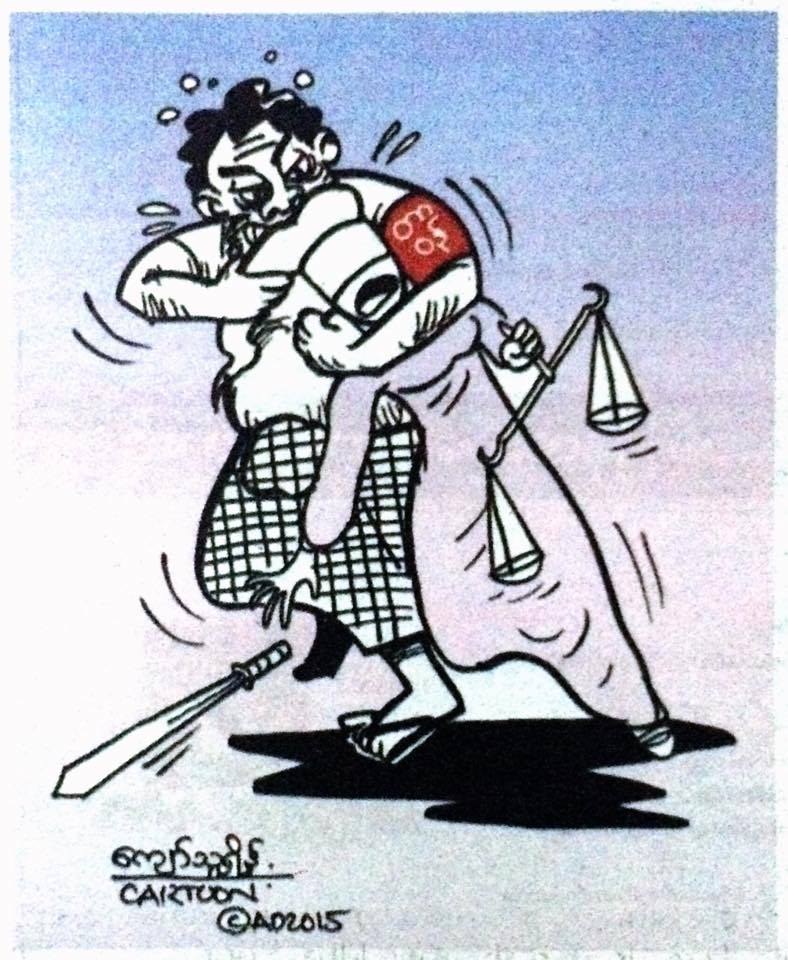
The recent violent crackdown of student protests in Myanmar has undermined the country's justice system. Cartoon by Kyaw Thu Rein. Widely shared on social media.
Cartoons are being widely shared on Facebook to condemn the government's violent methods in handling student protests in the former capital city of Yangon in Myanmar.
The Facebook page Brainwave (Nyanhline) is collecting some of these cartoons, which quickly spread online when about 200 students and activists were attacked by the police on March 5, 2015.
The youth protesters in front of the Yangon city hall were waiting for the arrival of students from Mandalay who had been marching towards the capital city since January 20 to press for education reforms.
The 400-mile march from Mandalay to Yangon attracted nationwide attention to the students’ demands including their rejection of the Education Bill which was introduced by the government last September. The new measure, according to students, would restrict human rights in campuses.
The march grew bigger as it passed several towns and cities. But it was often blocked or intimidated by the police and other government forces.
On February 11, the government negotiated a dialogue with the students, who asserted their right to reach Yangon. But the government rejected it and ordered a blockade to prevent the march from arriving in the country's premier city. The march kept moving forward, however, until it neared Yangon.
To support the marchers, Yangon students gathered in front of the city hall to demand the removal of the blockade.
This is the moment when a group of civilian police known as Swam Ar Shin, which literally means power owner, dispersed the students.
Swam Ar Shin is regarded by many residents as thugs who are backed by the government to fight and arrest protesters. The red band they wear on their arms, with an inscription that reads “on duty”, has become a symbol of oppression and state violence. Swam Ar Shin became infamous for their brutal and violent crackdown of the protests during the Saffron Revolution in 2007.
It is hoped that Myanmar's so-called democratic transition will render this group irrelevant. Unfortunately, they were mobilized once more to enforce law and order, which led to the brutal dispersal of a peaceful student-led protest.
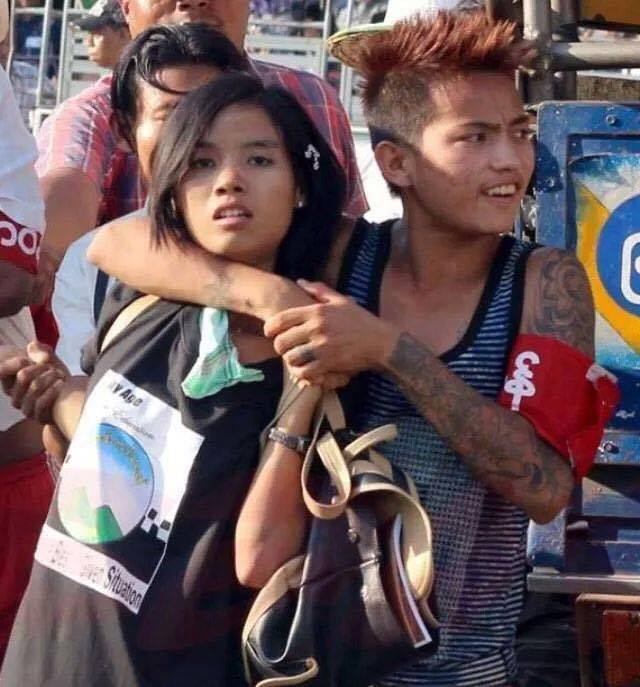
A member of the notorious civilian police arrests a female student activist. Photo became viral on Facebook.
The use of civilian police to attack a rally was denounced by many. Cartoonists were among those who criticized the government for using excessive force against the young protesters. Their cartoons, gathered on Facebook page of Brainwave (Nyanhline), reflected the anger of many citizens and rising cynicism to the political reforms that the military-backed civilian government are allegedly implementing.
For example, cartoonist Kyaw Thu Rain depicts the Swam Arr Shin as the main threat to the country's democratic transition.
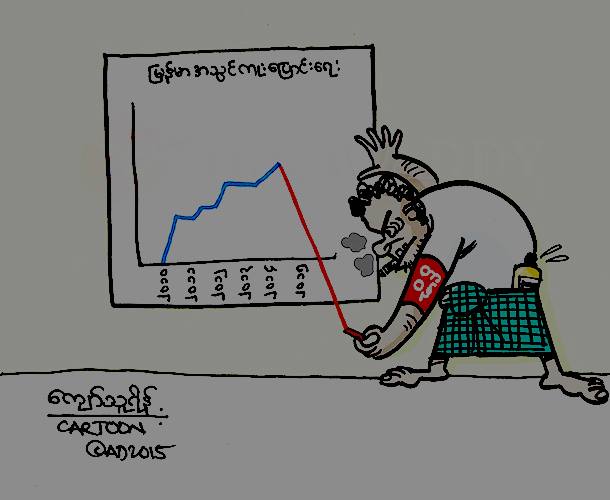
The label of the graph reads Myanmar's transformation.
The X axis shows the year 2010 to 2015. Cartoon by Kyaw Thu Rein. Widely shared on Facebook.
The cartoonist Saw Naing Htut believes that the police force is being misused.
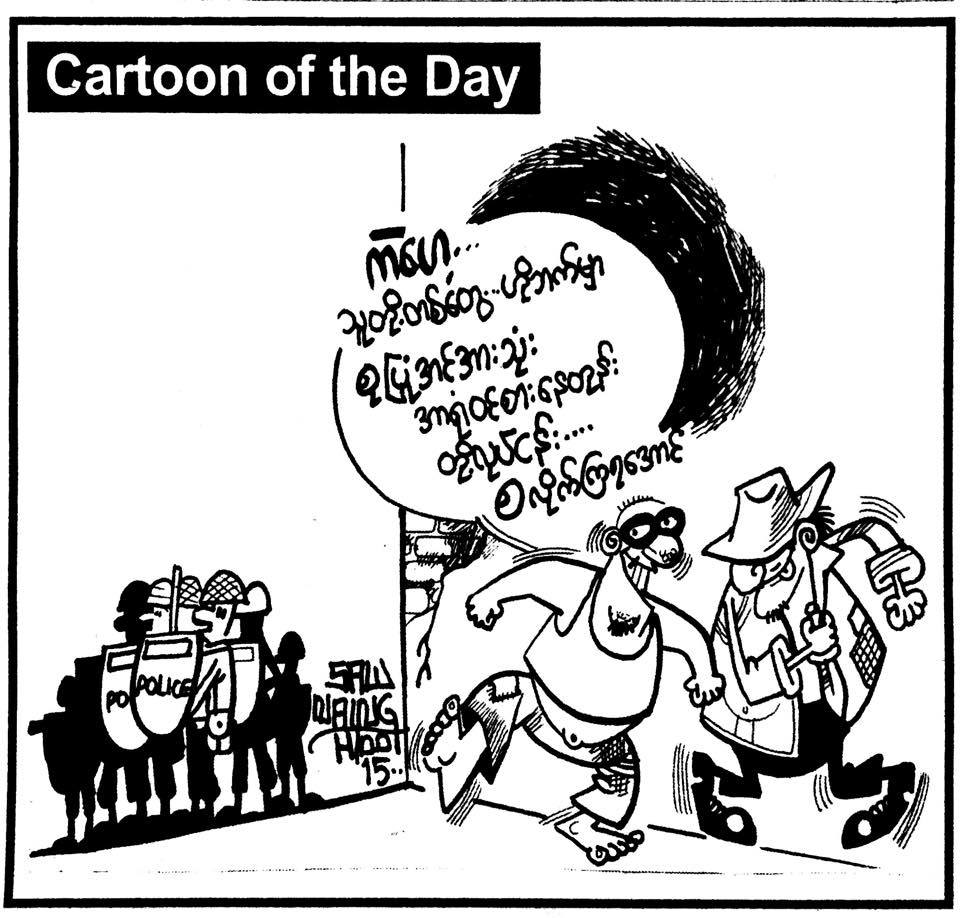
The text reads “OK, let's start our business, while they [police] have their attention on the other side”. Cartoon by Saw Naing Htoo. Widely shared on Facebook.
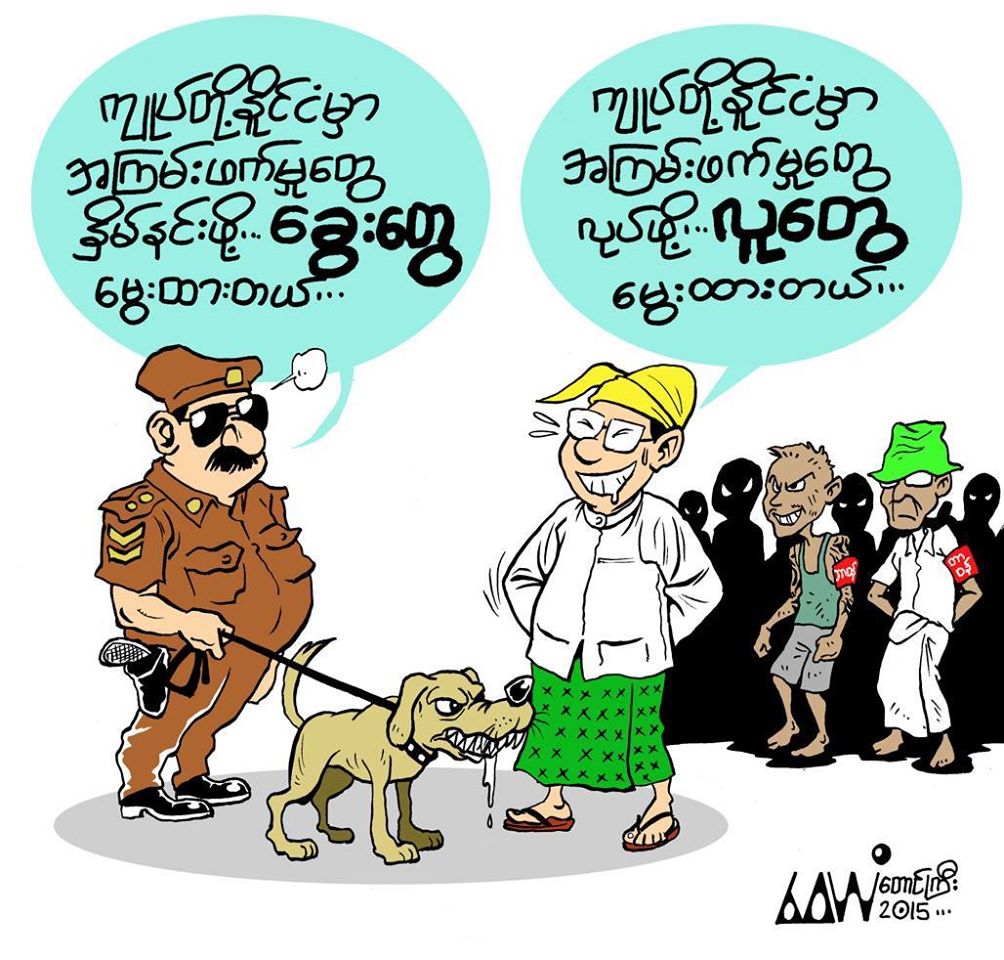
Left: In our country, we train dogs to take care of violent acts. Right: In our country, we train people to conduct violence. Cartoon by AAW Taung Gyi. Widely shared on Facebook.
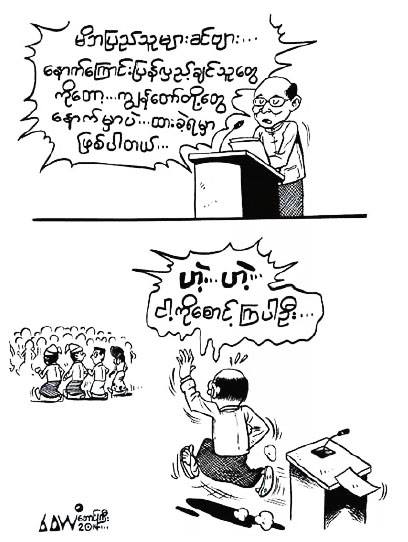
Top: Dear beloved citizens, for those who want to regress, we will have to leave them behind. Below: Hey, hey, wait for me. Cartoon by AAW Taung Gyi. Widely shared on Facebook.
For cartoonist Kar Lu Pyi, he believes education reform is a very important step to train a new breed of leaders.








9 comments
Thant Sin, thanks very much for this overview of cartoonists responding to the protests. We are only hearing about the protests here in the US today. Were the arrests made yesterday, March 10, or were most of the arrests earlier, on March 5? If on March 5th, any idea on why there was so little global media coverage of those arrests on the 5th?